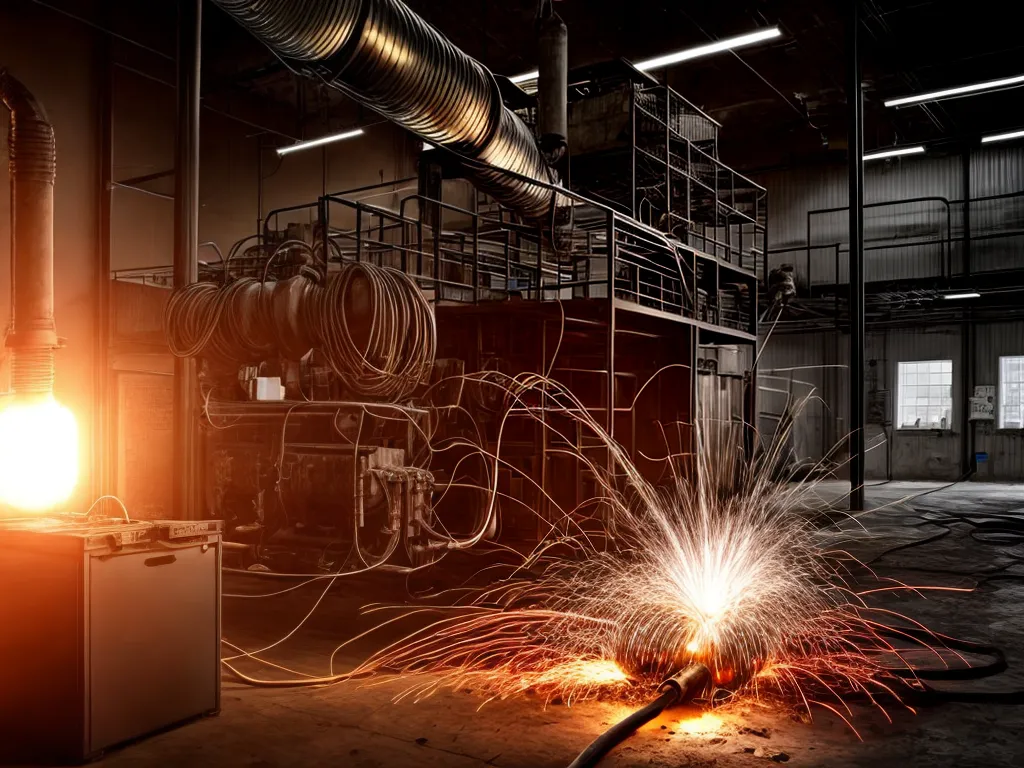
As an electrician working in industrial settings, I frequently come across electrical installations that are not up to code. Many facility managers and business owners are unaware of some of the more obscure violations of the National Electrical Code (NEC) that exist in their buildings. In this article, I will cover several industrial electrical code infractions that often fly under the radar.
Improper Conductor Ampacity Ratings
Using undersized wires is one of the most common electrical violations I find. The NEC requires electrical conductors to be sized according to their ampacity, which is the maximum current they can safely carry. Yet, I routinely see circuits wired with conductors that are rated too low for the equipment they supply. For example:
- A 20 amp circuit breaker with #14 AWG wire, which is only rated for 15 amps. This poses a fire hazard.
- A 30 amp circuit for a large motor wired with #12 AWG, rated for only 20 amps. This can cause overheating.
- #10 AWG wire on a 50 amp circuit. The minimum size here should be #8 AWG.
I always recommend upsizing wiring to the next largest standard size to provide a safety margin. It's a small investment that can prevent major problems.
Missing Overcurrent Protection
Overcurrent devices like circuit breakers and fuses are vital for safety. They interrupt excessive current to prevent wire overheating and fires. Yet I frequently find circuits without any overcurrent protection at all, especially for large equipment like HVAC units and industrial machines.
Some examples I see:
- A rooftop air conditioning unit wired without a disconnect or fuses.
- An industrial dust collector powered by unfused cables.
- A 30 horsepower motor connected directly to the panel with no starter or overloads.
This violates NEC requirements for overcurrent protection in nearly every circuit. Properly sized overcurrent devices must be installed to reduce fire risks.
Neutral-Ground Bonding Issues
The neutral and ground wires in an electrical system must be properly bonded according to NEC guidelines. I often discover improper neutral-ground connections in industrial facilities, including:
- Multiple neutral-ground bonds in a subpanel, when there should only be one in the main service panel. This can lead to short circuits.
- No neutral-ground bond at all in a separately derived system, leaving the circuit unstable.
- Bonds removed in old systems that were grandfathered in, but now require a bond to meet new code.
Proper neutral-ground bonding maintains electrical stability in the system. Having a qualified electrician assess bonding is worthwhile.
Exposed Live Parts
Energized electrical parts like buses, terminals, and connections must be enclosed to prevent accidental contact according to NEC 110.27. Yet I frequently find uncovered live components in industrial settings, creating a risk of dangerous shocks. For example:
- Open panelboards with exposed busbars that people can accidentally touch when too close.
- Transformer terminals without protective covers, allowing contact with high voltage lugs.
- Motor control center buckets with missing deadfronts, exposing terminals.
Installing proper enclosures and covers for live parts greatly reduces shock risks for workers near electrical systems.
Failure to Provide Overload Protection
Industrial motors and machinery require overload protection under NEC Article 430. This helps prevent overheating and equipment damage if currents exceed safe levels. However, I discover motors and machines without overload protection, including:
- Conveyor motors missing properly sized overload relays/fuses.
- Machinery like mills and lathes wired without overcurrent protection.
- Overload devices bypassed or removed from circuits.
Lack of overloads leaves equipment vulnerable to damage, breakdowns, and even fires. Professional installation of overload protection is essential.
Improper Conductor Terminations
Secure, robust connections are vital for safe, reliable electrical systems. However, I find wiring issues like loose connections and undersized lugs frequently in industrial settings. For example:
- Bolted connections that are loose or corroded, causing resistance and overheating.
- Overheating and charring signs at connections, indicating a poor termination.
- Undersized lugs used for larger conductors, allowing wires to pull out.
- Unsecured cables that can vibrate loose over time.
Proper terminations resist vibration, corrosion, and overheating. It takes some extra effort upfront to make reliable connections that will last.
Inadequate Grounding Electrodes
The NEC requires electrical systems to be grounded to the earth to prevent shocks and stabilize voltage. However, I often discover inadequate grounding in industrial facilities, like:
- A single small ground rod, when NEC 250.56 would require multiple full-size rods.
- Old water pipe grounds that are no longer sufficient due to updates.
- Damaged or corroded electrodes that have lost conductivity with the earth.
Regular inspection and improvements to grounding electrodes are needed to account for changes over time. Installing grounding systems to NEC standards provides maximum safety.
Noncompliant Industrial Control Panels
Industrial control panels with PLCs, VFDs, and complex wiring fall under strict NEC standards. But many existing panels do not meet requirements like:
- Proper wire segregation between low and high voltage circuits.
- Overcurrent protection for control circuits.
- Disconnects to safely cut off power.
- Markings and diagrams identifying components.
Upgrading outdated industrial control panels is advised to avoid arc flash hazards and improve reliability. Following UL, NEC, and NFPA 79 standards is key.
Conclusion
There are many obscure electrical code requirements that are overlooked in industrial facilities, potentially creating major hazards. As an electrician, I make it a priority to identify and correct issues like undersized wiring, missing overcurrent protection, poor terminations, and inadequate grounding. Staying up-to-date on changing NEC rules and best practices keeps workers safe and prevents electrical fires, failures, and downtime. I recommend having a qualified electrical contractor conduct regular assessments to catch problems before they cause harm. Following code standards takes diligence, but it pays off in better safety and reliability.